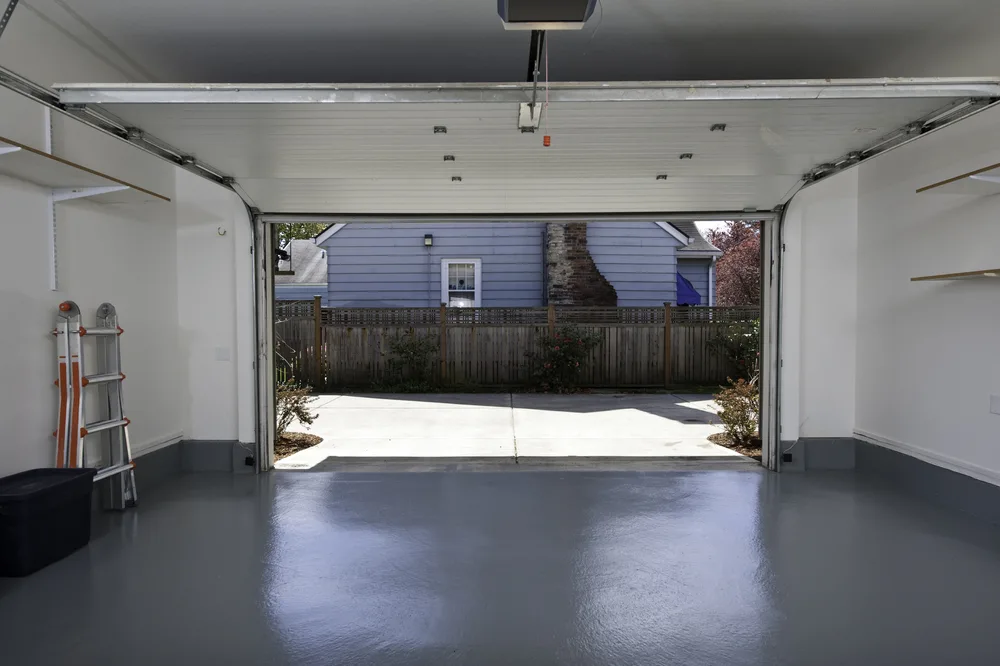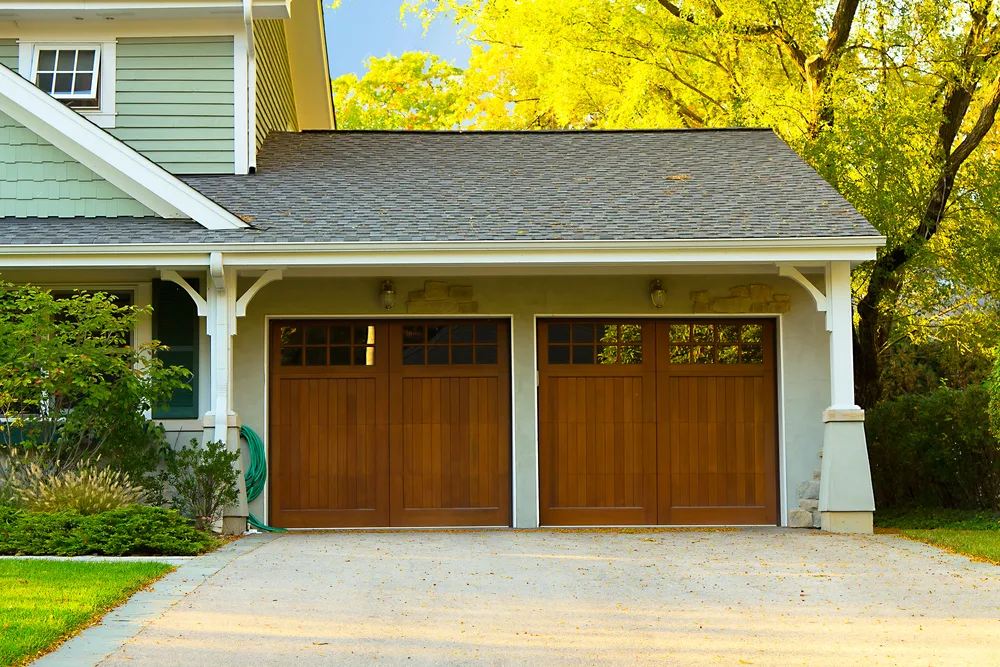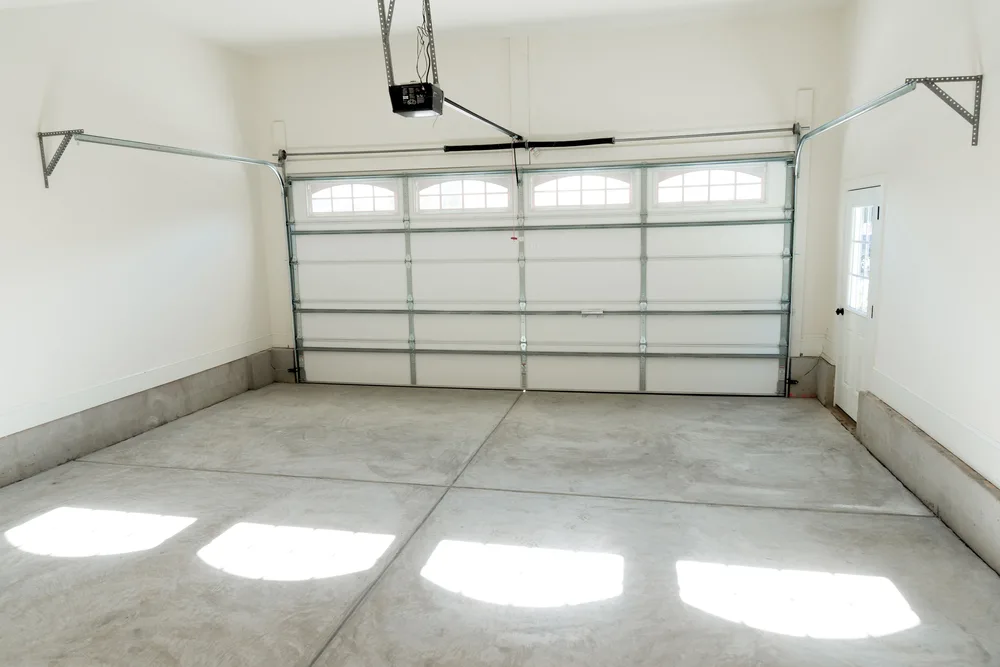While other areas of your home require ventilation systems that meet certain codes, the garage is one place where you may be left wondering about the requirements. The specifications for garage ventilation are not included in many building codes.
Why are there no regulations for venting garages? Surely there are strong arguments in favor of protecting the air quality of these spaces. Well, the EPA certainly agrees with this assumption as you will see later in this article, and the benefits of garage ventilation are the likely reason for the vents in your garage.

Garage vents are mandatory if hydrogen-generating appliances are present. Vents can indicate adherence to EPA advice or an intent to convert the garage into living space. Heat control, avoiding toxic gas build-ups, and mold prevention can motivate garage vent installation. Insulated garages are often vented.
Garages Don’t Require Vents
If you have vents in your garage, then they are not there because of any code requirements. Garage ventilation is not required by the International Residential Code (IRC), the code that is adopted by the majority of American states. There is also no federal code requirement for ventilation of garages.

You should always check your local codes, but California, for instance, does not make any adaptations or additions to the IRC regarding garage ventilation.
This means that you do not need to worry about ventilating your garage for the sake of the law. But, while you will not get in any trouble for having an unventilated garage, there are some benefits to ventilation, which may be why they were installed in your garage.
Before we get to these benefits, let’s look at possible reasons why the codes omit to regulate garage ventilation.
Possible Reasons for This
Garages Have Lots of Natural Ventilation
Garages automatically have several sources of natural ventilation. Namely, they have big opening doors that are used regularly. Whenever the garage doors are opened and closed, the garage air gets circulated with fresh air from outside.
Garages are not “finished” like the habitable spaces of a home are, so they tend to have poor insulation, which means that air leaks are likely. These air leaks, while they are unintended, provide plenty of natural ventilation for a garage.
Garages also regularly have more external openings in the form of windows and doors. Most garages have at least one other opening than the large garage door, including either a door or an operable window to the outside.
Garages Not Habitable Spaces
Habitable spaces include all areas of the home where people spend time, including kitchens, living rooms, and bedrooms. Ventilation of habitable spaces is regulated in Chapter 2 of the IRC.
Air quality can be one of the biggest facilitators of health or disease for inhabitants. For example, humid air is detrimental for those with lung conditions and can become breeding grounds for unhealthy molds, bacteria, and fungi. Thus, if no one “lives” in the garage, it is less important.
Furthermore, there aren’t moisture-generating processes in the garage. Whereas in rooms such as the bathroom and kitchen, where moisture is commonly generated, ventilation is essential.
If you do have vents in your garage, there may have been the intention to convert the garage into a living space and the vents were installed to make future alterations easier.
Garages Are Isolated From House

Garages must be separate from living spaces. Requirements for this separation are dictated by Section R302.5 of the IRC. This means that in the garage it is not as essential to preserve air quality since it is not freely communicable with the living space.
Garages may not have doorways or other openings into bedrooms. They may have openings to the rest of the home, but these must be solid wooden, steel, or fire-retarded doors that meet a certain thickness and are equipped with self-closing features.
Ducts in the home that run through the garage must be made of steel or another approved material and must not open into the garage, eliminating the interaction of the garage with the air circulating through the rest of the house.
Garages Cannot Be Included in House HVAC Systems
Garages must not be connected to the HVAC system according to Section M1601.6 of the IRC. This code states that:
“furnaces and air-handling systems that supply air to living spaces shall not supply air to or return air from a garage”.
This means that if you have vents in your garage they will not be connected (or should not be connected!) to your whole-house HVAC system. Because you are not taking air from the garage and putting it in your breathing air, the air ventilation doesn’t need to be so regulated.
Garages Require CO Alarms
Any garage that has an opening that connects to the home (any attached garage) requires a carbon monoxide (CO) alarm, which is stipulated in Section R315.2.1 of the IRC.
The main concern with garage air is CO poisoning from car exhausts. CO is a highly toxic colorless and odorless gas released from vehicle exhausts. Since a person cannot see it with the naked eye or smell it, an alarm is necessary to ensure the safety of garage air.
With the alarm, CO build-up is unlikely to go unnoticed. Therefore, natural ventilation and an alarm are all that is required to prevent CO gas from becoming a danger.
- Electrochemical sensor technology detects CO gas
- Easy installation, no wiring needed, detects during a power failure by operating on 2-AA batteries (included)
- Conveniently designed & portable: simple to install on a wall of your home or place on a tabletop
- Green LED indicates power to the smoke detector, while an 85-decibel alarm & a red LED indicates the presence of carbon monoxide
Last update on 2024-03-27 / Affiliate links / Images from Amazon Product Advertising API
Hydrogen-Generating Appliances in Garages
There is an exception to the “no ventilation required” status of garages. If you have hydrogen-generating appliances in your garage or the previous owners did, then this might be why you have vents in the garage.
In such cases, they are required by Section M1307.4 of the IRC, which specifies that the garage must be no more than 850 sq. ft, and it must have two permanent openings. One must be no more than 12″ from the garage ceiling and the other must be no more than 12″ from the floor of the garage.
Additionally, the garage must have mechanical ventilation in accordance with IRC codes.
Hydrogen-generating appliances can create dangerous conditions because hydrogen is highly flammable. Combined with the fact that garages are often home to combustion engines or other fire hazards, the need for ventilation in the presence of such appliances becomes apparent.
Probably Passive Vents
The vents in your garage are probably passive vents. These are vents on the exterior walls that just allow fresh air to flow into the garage and old, hot air to flow out of the garage, driven only by the movements of air inside and outside of the garage.
Passive vents are highly dependent on weather patterns. If the weather outside is warm and muggy, the inside of the garage will be humid, too. However, since the garage isn’t meant to be a living space, comfort doesn’t need to be the number one priority.
In most cases, passive vents and natural ventilation will be sufficient or overly sufficient for garage ventilation, except in the case of hydrogen-generating appliances.
Active Ventilation Recommended by EPA
Active garage ventilation is recommended on Page 17 of the EPA’s Report on Building Codes and Indoor Air Quality. This suggests having mechanical ventilation in addition to the natural ventilation already present.
The EPA recommends a 100 CFM ducted or 80 CFM un-ducted exhaust fan that vents to the outdoors and runs continuously. It does not have to run continuously if it is on an automatic system and it turns on when occupied and runs for an hour after it’s vacated.
If you have active ventilation-related vents in your garage, then a previous owner or builder may have been acting in accordance with this EPA recommendation as a precaution.
Benefits of Garage Vents
In warm weather areas, vents can be large assets for controlling heat. Since garages typically lack insulation, they lack protection from the heat on the most brutal summer days. Installing vents can help reduce the internal temperature of the garage by creating airflow.

“Suicide vents” are sometimes built into garages near the ground and provide passive ventilation. They are helpful for allowing carbon monoxide gas to escape when the car is running and one of their main purposes is evident in the name.
While these vents are not required in international codes, local codes may have more to say about them.
In addition to improving air conditions, vents can help prevent mold. Mold thrives in stagnant, warm, and humid conditions. Some molds can be harmful to your health or the structural health of your garage and its contents.
One of the best ways to prevent mold growth in your garage is to make sure the area receives proper air circulation.
If you don’t think that these benefits are applicable to you and would like to close up your garage vents permanently, then there are some relatively easy ways to do this.
Insulated Garages Benefit From Ventilation
Insulation is meant to keep air in and thus trap heat or cold where it is beneficial and desirable (most of the time). While insulation helps save energy and money, it doesn’t always make a positive impact on air quality. Insulation can create stale or humid air conditions if there is not also ventilation present.
If your garage is insulated, it will hold in any toxic gases or fumes released into it unless there are vents. This is a problem since vehicles, which release carbon monoxide are stored in garages.
Chemicals, pesticides, and paints are all often stored in the garage as well, and these release toxic fumes into the air. To keep your insulated garage air healthy, ventilation is highly recommended.
If you have an insulated garage, then this may be why there are vents.
Sources
https://www.hgtv.com/design/remodel/mechanical-systems/passive-ventilation

